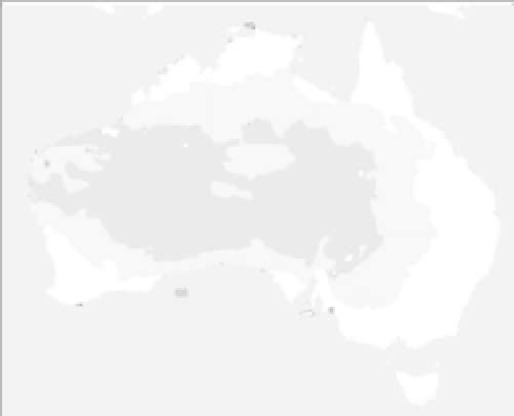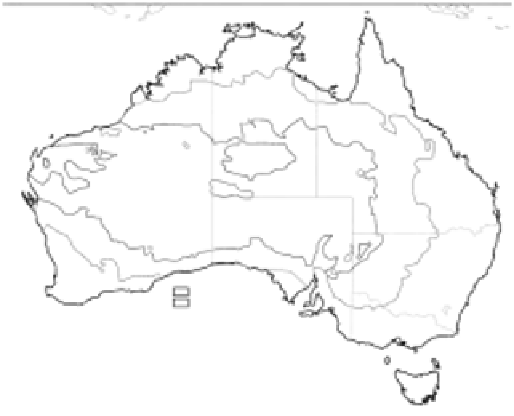Environmental Engineering Reference
In-Depth Information
late Pleistocene appear to have been about four times faster than in the early Pleistocene
and may have reached a rate of 4.9 ft 10
−3
year
−1
. Shortly before the Holocene, loess accu-
mulation ceased almost everywhere in Central Asia. A progressive trend toward greater
aridity through the Quaternary is evident from soil and pollen evidence within the profiles
and may be related to progressive uplift of the Ghissar and Tien Shan Mountains.
*
The Aral-Caspian basin in the western part of the Turkestan Desert shows dramatic evi-
dence of marked hydrological fluctuations and, during glacial times, may have been occu-
pied by the greatest known pluvial lake, covering an area of around 0.43 million miles
2
.
The highest shoreline was 250 ft above present Caspian level, and the Aral and the Caspian
were united and extended some 813 miles up the Volga River from its present mouth. The
largest transgressions occurred during early glacial phases, partly because reduced tem-
peratures caused less evaporative loss, partly because of inputs of glacial meltwater, and
partly because the surface over a large part of the catchment was sealed by permafrost.
88
Interglacials were times of regression.
1.7 Australia
With the exception of Antarctica, Australia is the driest of the continents, with a total of
around 2.13 million miles
2
experiencing appreciable aridity (Figure 1.15). Paradoxically,
however, aridity is not especially extreme in its intensity, and mean annual precipitation
levels do not fall below 4-5 in. Indeed, because of another major control on its landscape
evolution and its relatively long history of tectonic stability over large areas, many of the
present features of its geomorphology are inherited from a great variety of climates that
may go back to the Jurassic or earlier. Dunes as old as the Eocene are still preserved.
89
Northern
Te rritory
Tanami
Desert
Great Sandy
Desert
Simpson
Desert
Queensland
Gibson Desert
South
Australia
Great Victorian Desert
New South
Wales
We stern
Australia
Desert
Desert grassland
Victoria
Ta smania
FIGURE 1.15
Deserts of Australia.
*
Detailed analyses are provided by R.S. Davis et al.
87



Search WWH ::

Custom Search